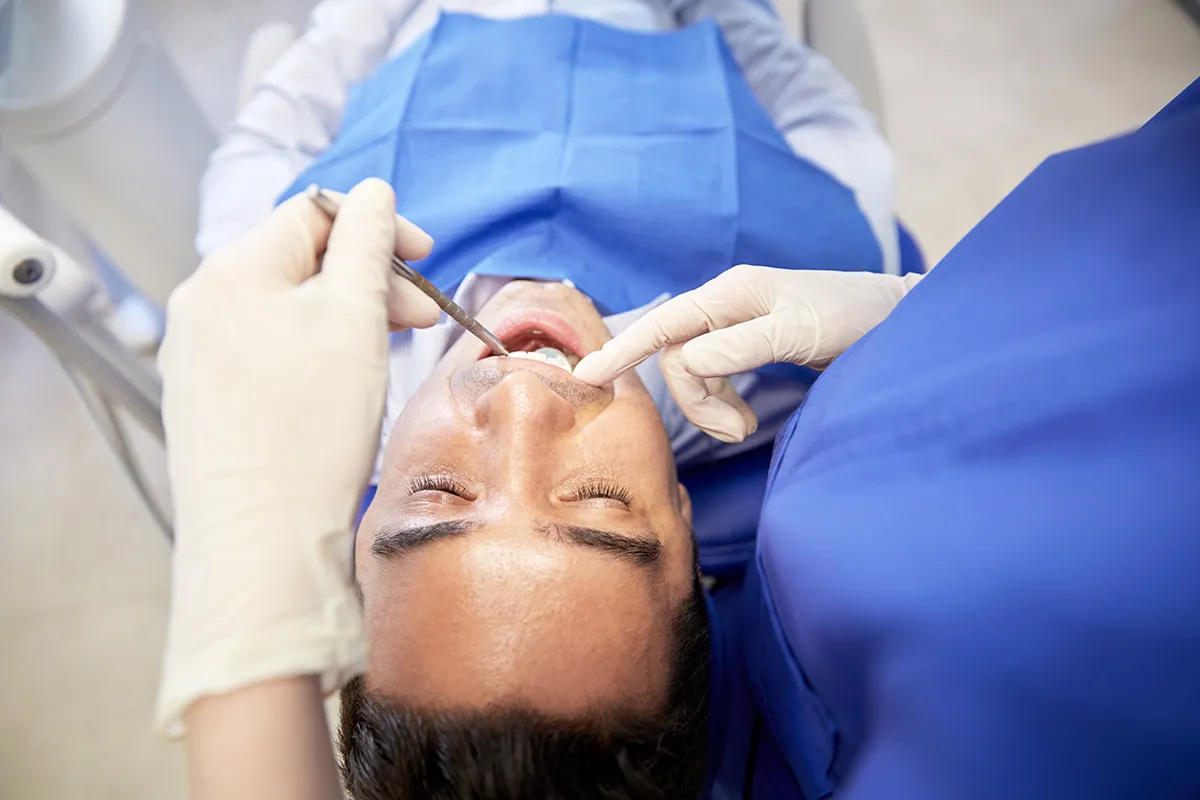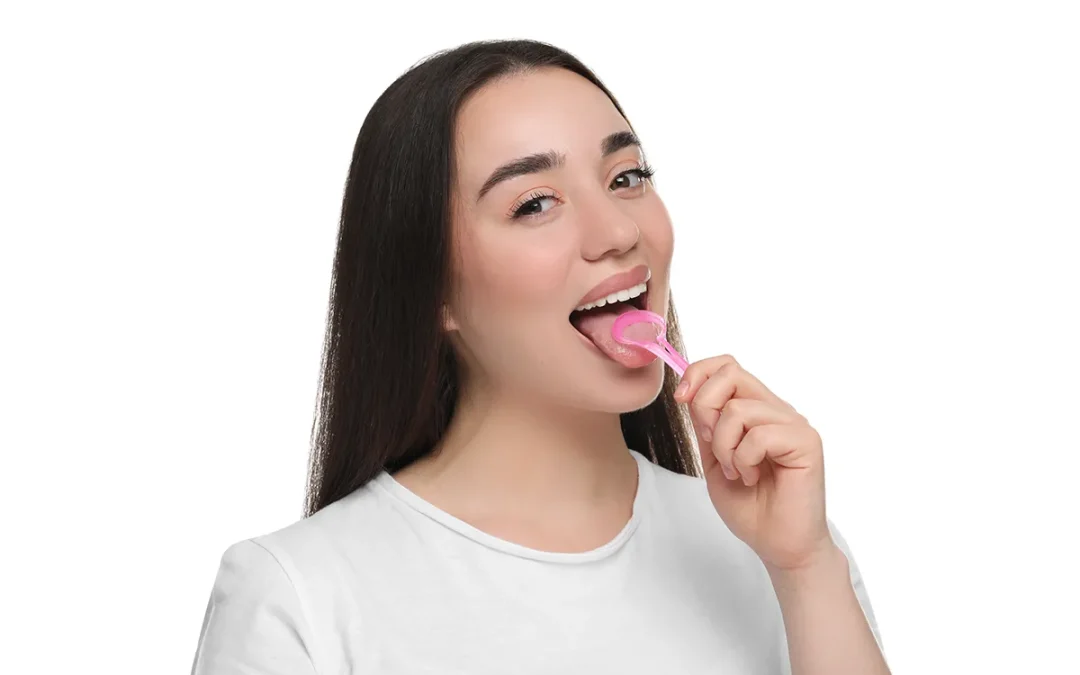Typical personal grooming and hygiene tips often overlook this but our tongues can become quite unpleasant and even unhealthy when they aren’t regularly cleaned. A thick, sticky layer of biofilm can build up which is a breeding ground for bacteria. Fed by food particles and dead cells, this can contribute to bad breath and oral infections. Regular tongue scraping helps remove this buildup, promoting fresher breath and better oral hygiene. It’s no overstatement to say that an unhygienic tongue can impact your oral and overall health, not to mention your social life.
What’s tongue scraping?
Regular teeth brushing helps our teeth and gums stay clean, but what about reducing their source of troublesome bacteria? Tongue scraping is an effective oral hygiene practice in which you manually scrape your tongue with a specialised tool, reducing the biofilm. Regularly reducing the microbial load in your mouth can reduce risk of periodontal disease, halitosis (bad breath) and tooth damage, while promoting better oral health and fresher breath.
Why scrape your tongue?
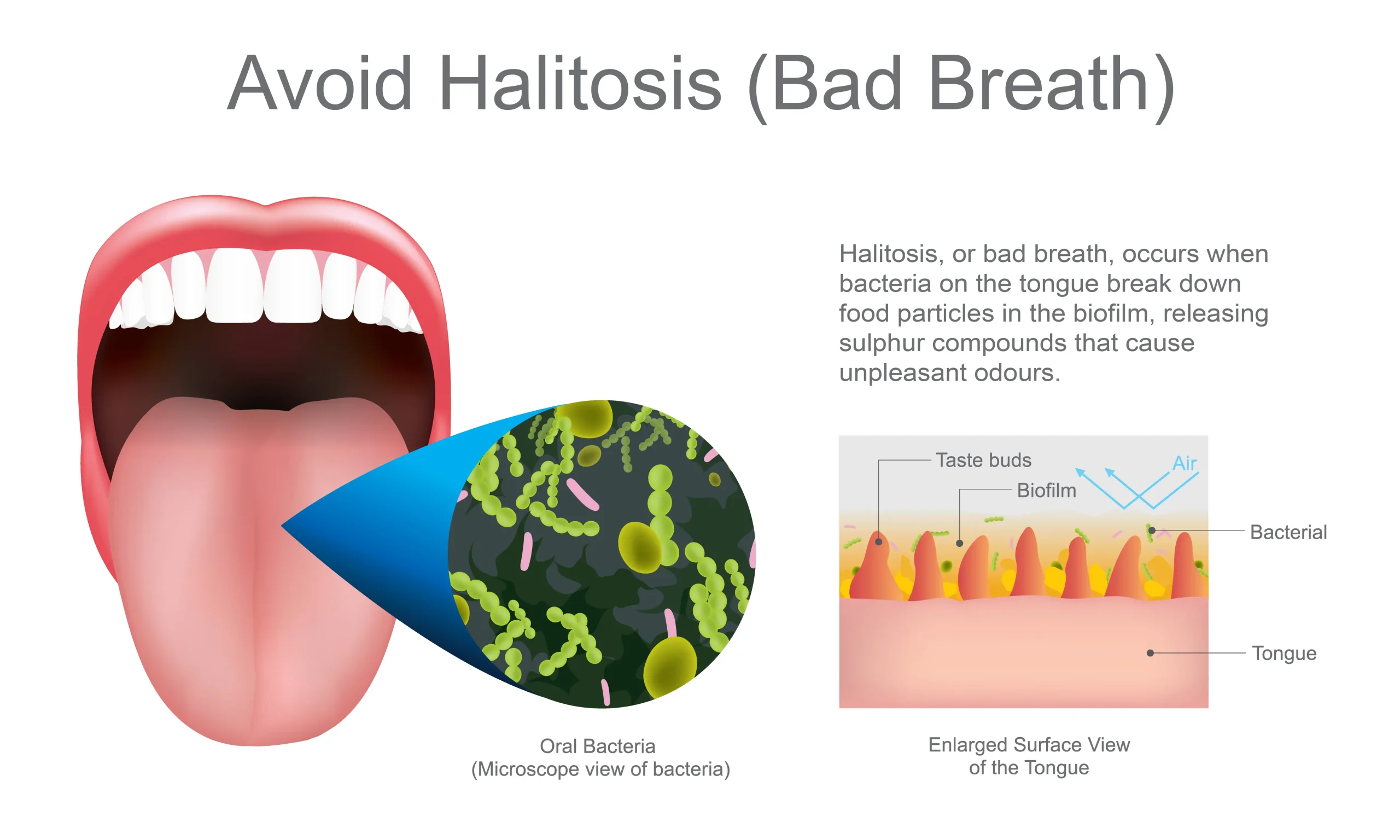
Fresh breath: One of the most noticeable benefits is fresher breath. The bacteria on your tongue are a primary culprit of bad breath. Removing these bacteria helps to eliminate the source of unpleasant odours.
Improved taste: A clean tongue enhances your taste buds, allowing you to savour the flavours of your food more fully. Removing the biofilm on your tongue exposes your taste buds, making your eating experience more enjoyable.
Reduced risk of oral infections: Regular tongue scraping helps to prevent the buildup of bacteria that can lead to oral infections like gingivitis and gum disease. Keeping the bacterial load low reduces the risk of these common oral health issues.
Balanced oral PH: Bacterial buildup on the tongue increases your mouth’s acidity, which can foster bacterial overgrowth elsewhere and increase your risk of tooth damage. When you reduce the level of bacteria and their toxins in your tongue’s biofilm, you help restore your mouth to a healthy pH balance.
Better overall health: Some studies suggest a link between oral health and overall health conditions, such as heart disease and diabetes. Maintaining good oral hygiene, including tongue scraping, can contribute to your overall well-being. A healthy mouth helps prevent systemic inflammation and infections that might impact your overall health.
How to tongue scrape the right way
1. Choose the right tool: Tongue scrapers are available in various materials, such as stainless steel, copper and plastic. Opt for a scraper with rounded edges to avoid irritating your tongue.
2. Clean your scraper: Before and after each use, clean your tongue scraper with warm, soapy water. This ensures that the scraper remains hygienic and free from harmful bacteria.
3. Proper technique:
- Extend your tongue as far as comfortably possible.
- Gently scrape the surface of your tongue from back to front. Start at the back of your tongue and move the scraper towards the tip in a smooth motion.
- Rinse the scraper between strokes to remove debris and bacteria.
- Repeat several times until the tongue appears clean, usually about 5-10 strokes.
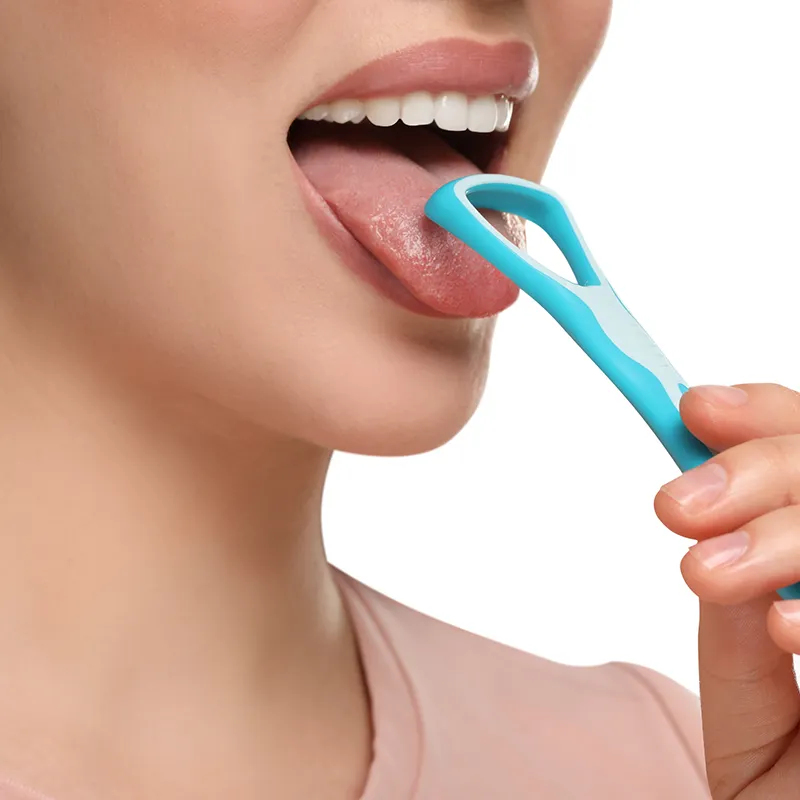
4. Rinse your mouth: After scraping, rinse your mouth with water to remove any remaining debris and bacteria. This helps to further cleanse your mouth and refresh your breath.
The dangers of improper tongue scraping
❌ Using excessive force: Scraping hard can irritate your tongue. Use gentle pressure to effectively remove the biofilm without causing discomfort or injury.
❌ Neglecting other oral hygiene practices: Tongue scraping is an addition to, not a replacement for, brushing, and flossing. Continue to brush your teeth at least twice a day and floss daily, and don’t neglect a healthy diet and regular dental checkups. Tongue scraping should be incorporated into a comprehensive oral health strategy, not used in isolation.
❌ Overlooking discomfort or sensitivity: Tongue scraping can offer various oral health benefits, but it still may not be right for your unique needs. Even when your technique seems correct, it is important to carefully listen to your body’s feedback. If you notice discomfort, numbness, irritation, soreness, or pain during or after tongue scraping, take a break to assess your symptoms. Discomfort which persists or worsens could signal any number of underlying issues, so get your dentist to evaluate your needs and recommend what’s best for you.
Tongue scraper or tongue brush?
Both tongue scrapers and tongue brushes are designed to improve oral hygiene by cleaning the surface of the tongue, but they differ in their design and effectiveness. Tongue scrapers feature a simple, flat edge that efficiently removes the coating, or biofilm, from the tongue. This scraping action provides a thorough and consistent clean, often requiring fewer passes to achieve noticeable results.
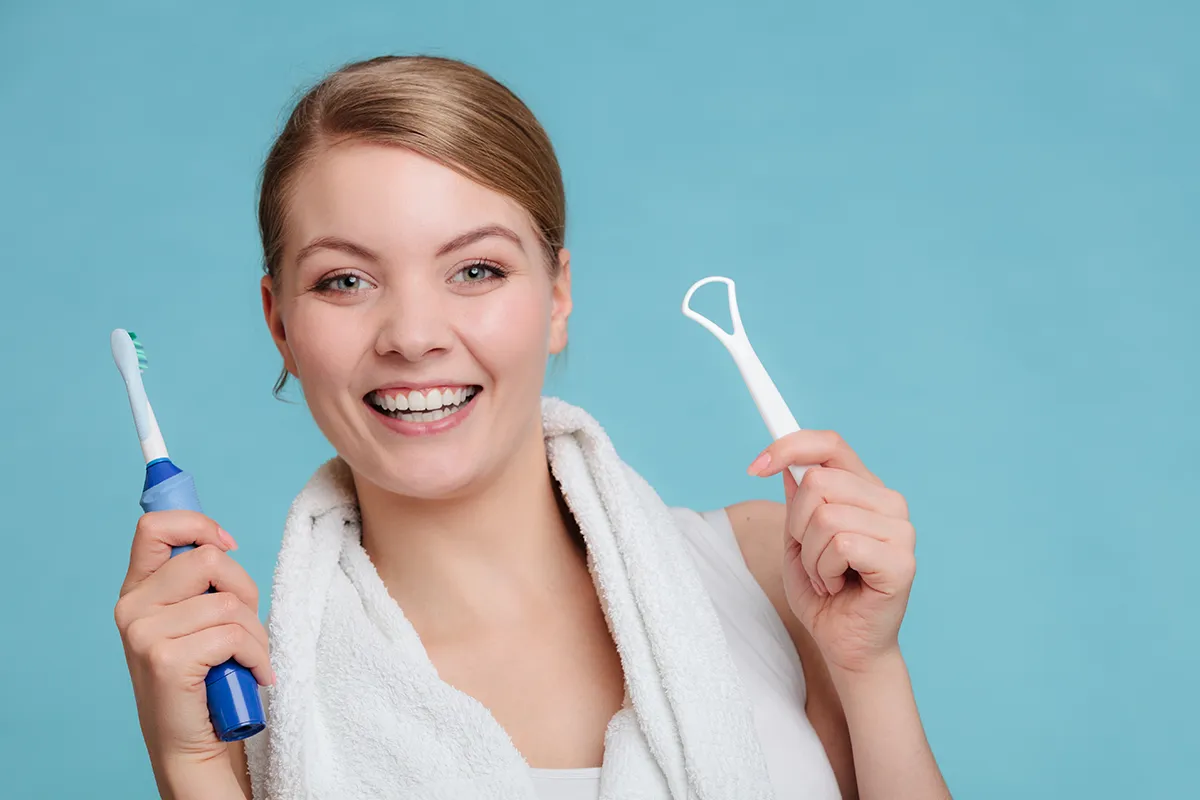
In contrast, tongue brushes have a broader, flatter head with softer bristles designed specifically for the tongue. While they can also effectively clean the tongue, they may not remove the biofilm as completely as scrapers due to the brushing motion being less effective at dislodging the sticky layer of bacteria and debris.
Ultimately, the choice between a tongue scraper and a tongue brush depends on personal preference and comfort. Both tools can contribute to improved oral hygiene, but tongue scrapers are generally favoured for their superior ability to remove the tongue coating more efficiently. If you find one method more comfortable or effective than the other, it is perfectly fine to choose the tool that works best for you. For personalised advice and to ensure you are using the most suitable tool for your oral health needs, it is recommended to consult your dentist.
Tongue scraping in your dental routine
To achieve the best results, tongue scraping should be part of your comprehensive daily oral hygiene routine. For optimal effectiveness, you should aim to scrape your tongue at least once a day, either in the morning or at night, or both if you prefer. Morning scraping helps to remove the build-up of bacteria and biofilm accumulated overnight, which can contribute to fresher breath and a cleaner mouth throughout the day. Evening scraping aids in eliminating any residual bacteria and debris from your meals, ensuring a cleaner oral environment before bedtime.
When incorporating tongue scraping, remember that gentleness is crucial. Apply only light pressure to avoid irritating your tongue or causing discomfort. If you experience any pain or sensitivity, reduce the amount of pressure or the frequency of scraping. Adjusting your technique or consulting with a dentist can help address any issues and ensure that your tongue scraping practice remains comfortable and effective. Consistently including this practice in your routine, alongside regular brushing and flossing, can significantly enhance your oral health and contribute to a more refreshing and hygienic mouth.
When to consult your dentist
If you experience persistent bad breath, oral pain or notice any unusual changes on your tongue, it is important to consult your dentist. These symptoms may indicate underlying dental issues or other health concerns that need professional evaluation. Your dentist can help diagnose any potential problems and offer tailored advice or treatment to address them.
Adding tongue scraping into your oral care routine can enhance your oral health, leading to fresher breath, improved taste and a reduced risk of oral infections, so long as you are also checking the other important boxes for great oral health. Keep your dentist in the loop to ensure that your oral hygiene practices are effective and that any potential issues are promptly addressed.
